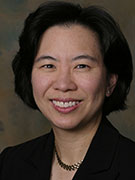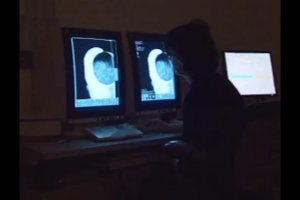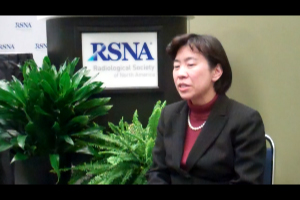Risk-based Screening Misses Breast Cancers in Women in Their Forties
Released: December 02, 2014
At A Glance
- Risk-based mammography screening using breast density or strong family history of breast cancer would potentially miss more than 75% of cancers in women in their 40s.
- Of the 136 breast cancer cases identified in women between the ages of 40 and 49, 50% were invasive.
- Among the women with invasive cancer, 79% had neither strong family history nor extremely dense breasts.
- RSNA Media Relations
1-630-590-7762
media@rsna.org - Maureen Morley
1-630-590-7754
mmorley@rsna.org - Linda Brooks
1-630-590-7738
lbrooks@rsna.org
CHICAGO – A study of breast cancers detected with screening mammography found that strong family history and dense breast tissue were commonly absent in women between the ages of 40 and 49 diagnosed with breast cancer. Results of the study were presented today at the annual meeting of the Radiological Society of North America (RSNA).
"Screening recommendations for this age group continue to be debated," said Bonnie N. Joe, M.D., Ph.D., associate professor in residence and chief of women's imaging at University of California, San Francisco (UCSF). "Recent publications have suggested risk-based screening based on family history and breast density. However, our study shows that this approach would miss a significant percentage of invasive cancers and could potentially be dangerous."
The retrospective study, conducted at UCSF, included 136 women between the ages of 40 and 49 with breast cancer identified by screening mammography between 1997 and 2012. Symptomatic patients undergoing diagnostic mammography and those with a personal history of breast cancer were excluded from the study. Patient family history, breast density, type of malignancy, lymph node status, and tumor receptor status were recorded.
"Notably, we found that almost 90 percent of the invasive cancers we would have missed using risk-based triage had positive receptor status, meaning they were very treatable and worth finding early," Dr. Joe said.
Of the 136 breast cancer cases identified, 50 percent were diagnosed as invasive, and 50 percent were diagnosed as ductal carcinoma in situ (DCIS), an early noninvasive form of breast cancer, although 88 percent of DCIS cases were intermediate or high grade.
A very strong family history was absent in 90 percent of patients, and extremely dense breast tissue was absent in 86 percent. Seventy-eight percent of patients had neither strong family history nor extremely dense breasts, including 79 percent of the cases of invasive disease.
"Our results show that by exclusively using a risk-based approach to screening mammography, we could potentially miss more than 75 percent of breast cancers in women in their 40s, thereby eliminating most of the survival benefit from screening mammography that has been previously shown in randomized controlled trials," Dr. Joe said.
Dr. Joe urges proponents of risk-based screening to continue research to find more effective means of risk-based triage.
"Neither family history nor breast density in combination or alone are sufficient risk factors to safely triage patients in risk-based screening," she explained.
Routine annual screening mammography has traditionally been recommended by organizations such as the American Cancer Society (ACS) and the American Medical Association (AMA) for all women beginning at age 40. In 2009, the United States Preventive Services Task Force (USPSTF) issued controversial new guidelines recommending screening with mammography every two years beginning at age 50.
"Based on our current knowledge and evidence shown in previous trials, it is still safest to get annual mammograms starting at age 40 in order to maximize the survival benefit of screening mammography," Dr. Joe said.
Co-authors on the study are Elissa R. Price, M.D., Alexander W. Keedy, M.D., Rita Gidwaney, M.D., and Edward A. Sickles, M.D.
Note: Copies of RSNA 2014 news releases and electronic images will be available online at RSNA.org/press14 beginning Monday, Dec. 1.
RSNA is an association of more than 54,000 radiologists, radiation oncologists, medical physicists and related scientists, promoting excellence in patient care and health care delivery through education, research and technologic innovation. The Society is based in Oak Brook, Ill. (RSNA.org)
Editor's note: The data in these releases may differ from those in the published abstract and those actually presented at the meeting, as researchers continue to update their data right up until the meeting. To ensure you are using the most up-to-date information, please call the RSNA Newsroom at 1-312-791-6610.
For patient-friendly information on mammography, visit RadiologyInfo.org.
Images (.JPG and .TIF format)
and Video clips (.mp4 format)
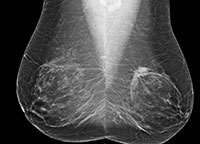
Figure 1. Bilateral MLO views from screening mammography.
High-res (TIF) version
(Right-click and Save As)
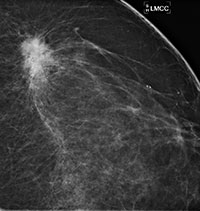
Figure 2. Spot magnification view demonstrates an irregular spiculated mass with associated calcifications in the upper outer left breast.
High-res (TIF) version
(Right-click and Save As)
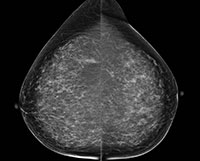
Figure 3. Screening mammogram demonstrating calcifications in the upper outer left breast. Bilateral cranio-caudal (CC) views shown here.
High-res (TIF) version
(Right-click and Save As)
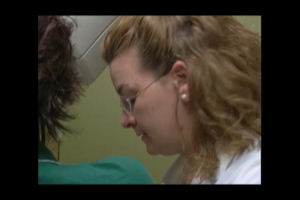
Video 1. Radiologic technologist preparing patient for and performing mammography.
Download.mp4
(Right-click and Save As)
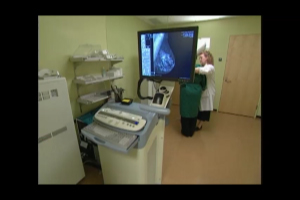
Video 2. Radiologic technologist and patient – mammography exam.
Download.mp4
(Right-click and Save As)
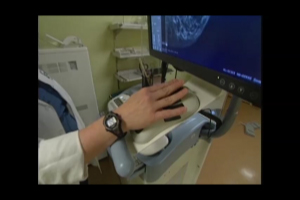
Video 3. Radiologic technologist and patient – mammography exam.
Download.mp4
(Right-click and Save As)
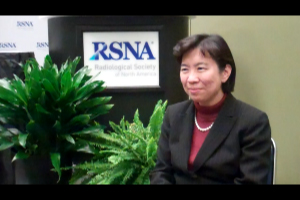
Video 5. Dr. Bonnie N. Joe discusses why she conducted research on risk-based screening.
Download.mp4
(Right-click and Save As)
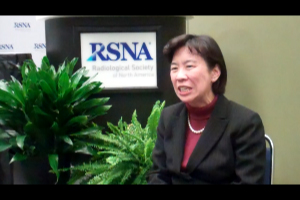
Video 7. Dr. Bonnie N. Joe discusses the key findings of her research on risk-based screening.
Download.mp4
(Right-click and Save As)
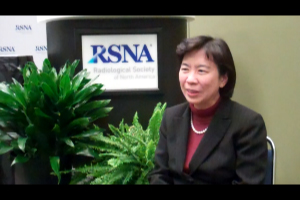
Video 8. Dr. Bonnie N. Joe explains why women should continue getting screened for breast cancer in their 40s.
Download.mp4
(Right-click and Save As)
